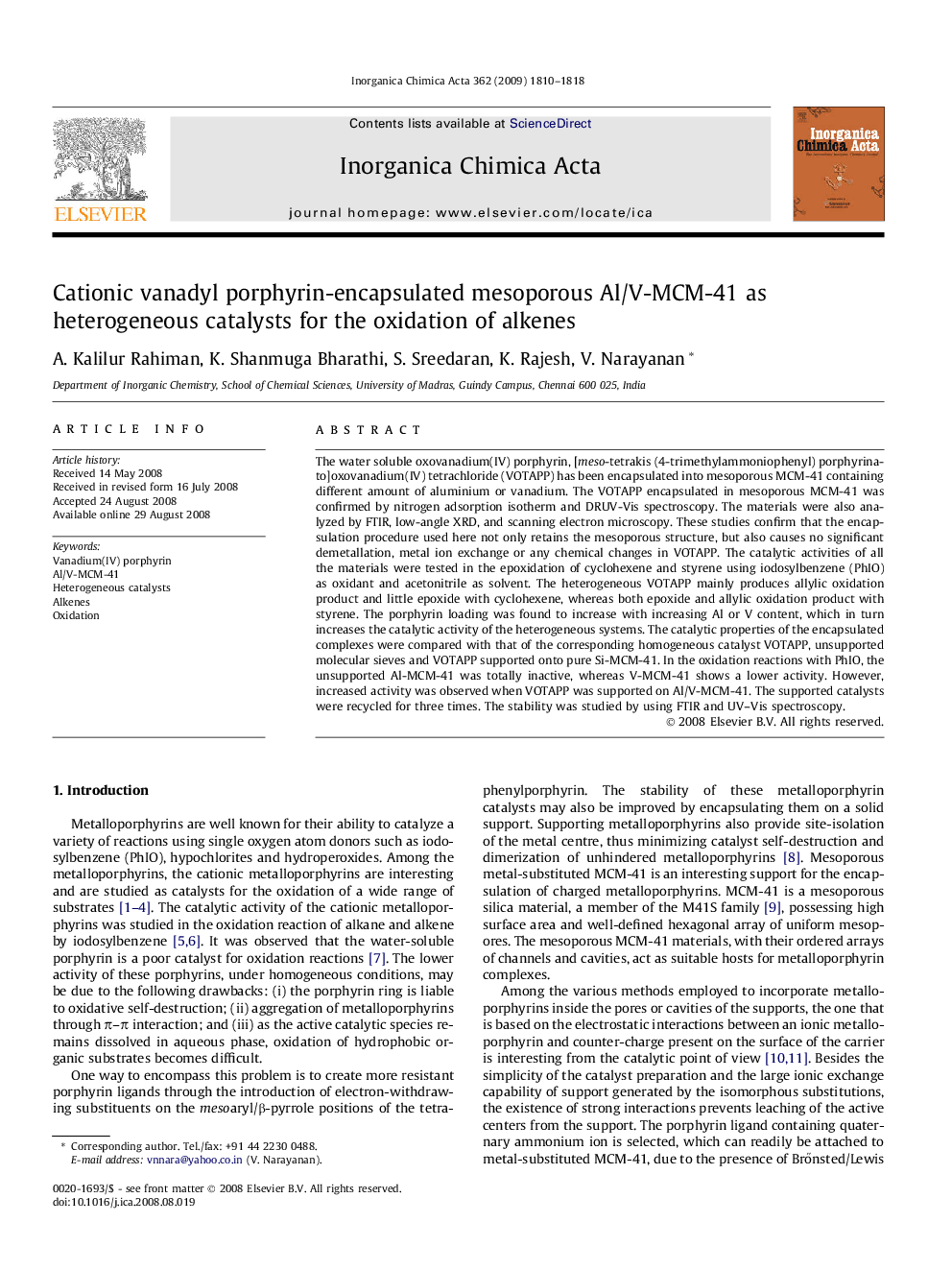| Article ID | Journal | Published Year | Pages | File Type |
|---|---|---|---|---|
| 1311385 | Inorganica Chimica Acta | 2009 | 9 Pages |
The water soluble oxovanadium(IV) porphyrin, [meso-tetrakis (4-trimethylammoniophenyl) porphyrinato]oxovanadium(IV) tetrachloride (VOTAPP) has been encapsulated into mesoporous MCM-41 containing different amount of aluminium or vanadium. The VOTAPP encapsulated in mesoporous MCM-41 was confirmed by nitrogen adsorption isotherm and DRUV-Vis spectroscopy. The materials were also analyzed by FTIR, low-angle XRD, and scanning electron microscopy. These studies confirm that the encapsulation procedure used here not only retains the mesoporous structure, but also causes no significant demetallation, metal ion exchange or any chemical changes in VOTAPP. The catalytic activities of all the materials were tested in the epoxidation of cyclohexene and styrene using iodosylbenzene (PhIO) as oxidant and acetonitrile as solvent. The heterogeneous VOTAPP mainly produces allylic oxidation product and little epoxide with cyclohexene, whereas both epoxide and allylic oxidation product with styrene. The porphyrin loading was found to increase with increasing Al or V content, which in turn increases the catalytic activity of the heterogeneous systems. The catalytic properties of the encapsulated complexes were compared with that of the corresponding homogeneous catalyst VOTAPP, unsupported molecular sieves and VOTAPP supported onto pure Si-MCM-41. In the oxidation reactions with PhIO, the unsupported Al-MCM-41 was totally inactive, whereas V-MCM-41 shows a lower activity. However, increased activity was observed when VOTAPP was supported on Al/V-MCM-41. The supported catalysts were recycled for three times. The stability was studied by using FTIR and UV–Vis spectroscopy.
Graphical abstractThe catalytic activity of cationic vanadyl-porphyrin, [meso-tetrakis (4-trimethylammoniophenyl)porphyrinato]vanadium(IV) tetrachloride (VOTAPP) encapsulated on well-defined pores of Al/V-MCM-41 mesoporous materials were studied. The catalytic activities of the synthesized composites were controlled by the porphyrin loading. These heterogeneous catalysts were re-used successively under the same reaction conditions.Figure optionsDownload full-size imageDownload as PowerPoint slide
